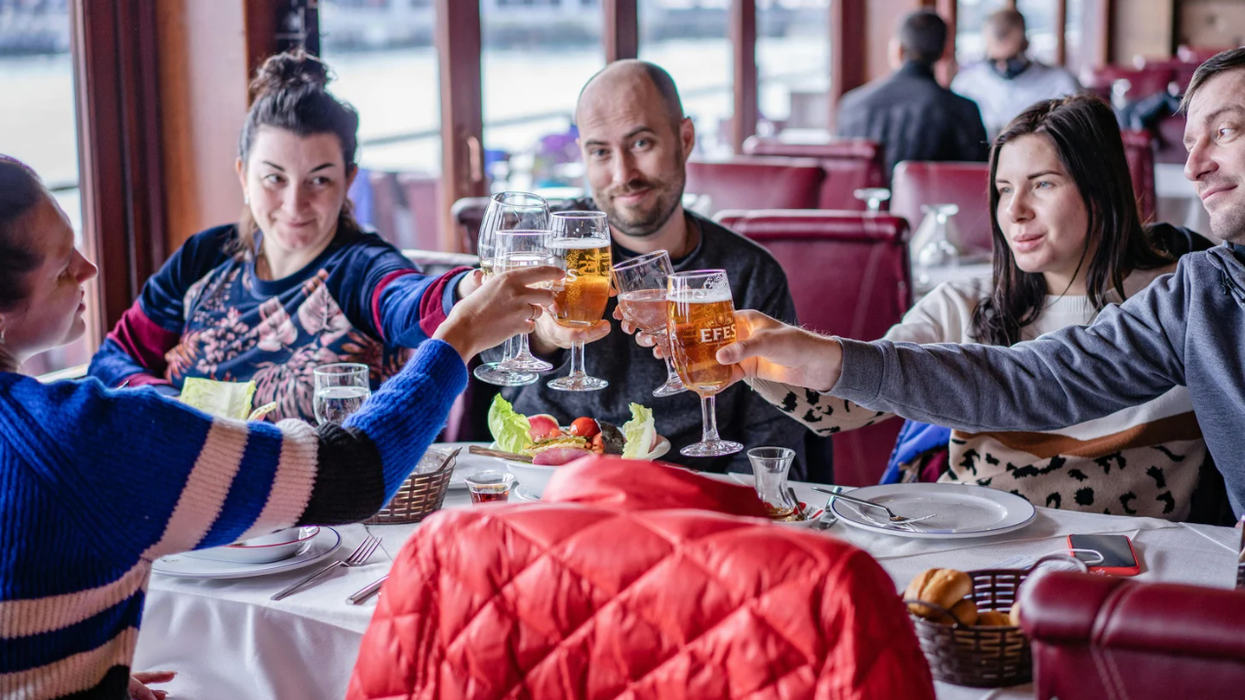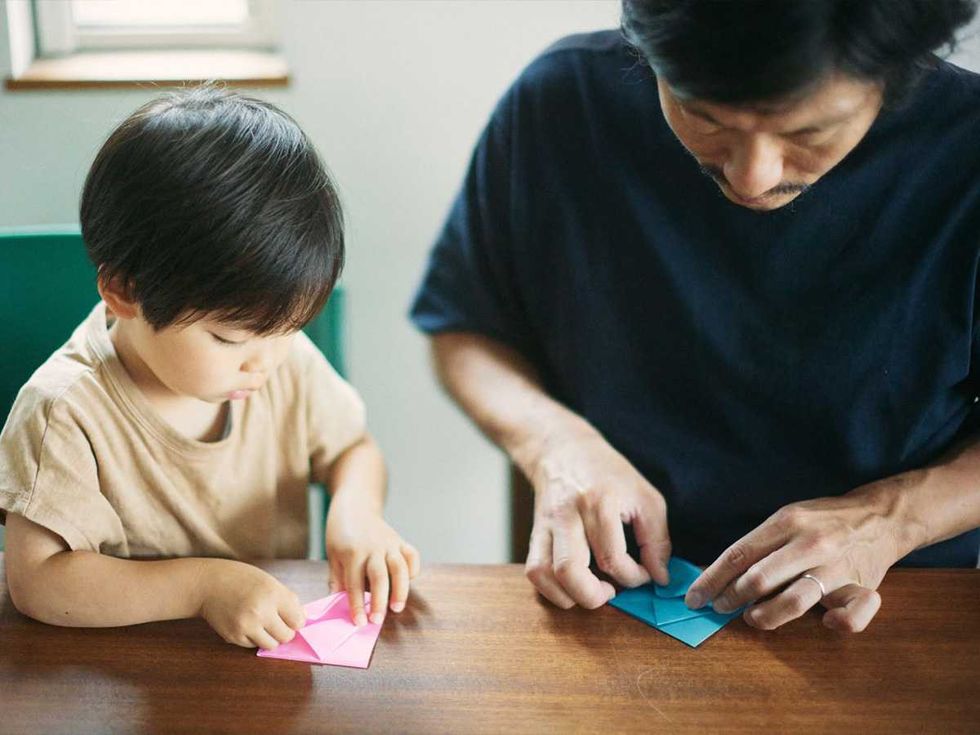Have you ever gnoshed something that made you feel like the physical embodiment of that food? There are bad foods for this to happen with, like when you eat pizza and then feel as if you’re a slice of pizza—greasy, shiny, red, slightly overheated. I wouldn’t wish transforming into a pizza on anyone, despite my love for pizza.
But when this phenomenon has positive results, it’s one of the greatest things in the world. And that is where dumplings come in. Dumplings are wonderful. They are plump, cute, take only two bites to eat, and cost next to nothing.
But the best part is, after you’re done eating them, you sometimes feel like a dumpling. Not that you become plump and cheap necessarily, but if dumplings could be emotions, one might describe such emotions as warm and fuzzy. Personally, after I eat a dumpling, I feel like I’m being enveloped in warmth and good vibes. Sometimes I feel a little ticklish. Not sure why that happens, but I’m sure the experience varies from person to person.
Beyond feeling like a human version of a dumpling after I finish consuming them, I think dumplings are great because there’s a certain decisiveness that comes with them that doesn’t always exist with other foods. This makes dumplings one of the most efficient foods out there.
Often you’ll hear the question phrased like, “Would you like to grab dinner?” followed up with, “Okay, what do you feel like?” When you can’t decide, you start to get angry because you’re hungry and it all goes downhill from there. It would have been easier to just suggest dumplings from the start.
All of this is to say that dumplings equal productivity, positivity, and togetherness—one doughy chomp at a time.
Arguably, dumplings originated from Roman recipes in which meats were minced and combined with herbs, then mixed with fat and poached in seasoned water.
The most familiar form of dumplings, and perhaps what most often comes to mind when talking about dumplings, are Chinese dumplings (steamed or pan-fried). According to Chinese legend, during the Han Dynasty, a man named Zhang Zhongjing came up with a solution to frostbite, of all things, by wrapping meat and herbs in scraps of dough, boiling them, and giving them to people to put on their frostbitten ears.
But every culture has a dumpling form.
In Middle Eastern culture, there are various versions of dumplings that are reminiscent of earlier and later types. There’s kafta, which are more on par with earlier Roman dumplings: meaty herb balls, often cooked alone or in a spicy sauce. The process of making them is simple, but communally oriented. Middle Eastern families come together to pack meat and herbs into the palms of their hands. It’s the same when my family gets together to make kafta—everyone, literally and figuratively, has a hand in the completion of the meal.
Momos from Nepal, which resemble Chinese dumplings, are typically more satchel-like in appearance. These bite-sized cuties are known as a delicacy and are a crowd favorite in the Nepalese region. Today, they’re usually filled with buffalo or chicken meat, but a variety of flavors have become popular over the years, including yak meat, ginger, and garlic. Roughly the size of a marble, they’re best eaten in one bite to experience the full explosion of flavor that each momo has to offer.
There’s the pierogi, which is most famously known as a Polish delight, though they are eaten all throughout Eastern Europe. There’s a sweet and savory component to the flavorful journey that your palette embarks on during a meal with pierogi. (In English, we pluralize the word by saying pierogies, though in Polish, the word pierogi is already plural). They’re commonly served with sour cream and fried onions and often found with any combination of fillings that include ground meats, cheeses, fruits, and potatoes.
The Swedish folks have their own delicious-sounding dumpling called kroppkaka (the plural is kroppkakor). These potato dumplings are filled with either bacon or pork and onions. They’re compared to the Lithuanian dumpling, cepelinai, which are similar, save a few differences. The outside is made from grated and riced potatoes and they’re stuffed with ground meat, though sometimes they can be stuffed with mushrooms and dried cottage cheese.
As I’ve attempted to find the origins for many of the dumplings that I’ve come across on the internet, I’ve run into ambiguity across the board. It’s difficult to pin down the exact origin of any region’s particular version of a dumpling, which I think makes it all the more popular. With so many iterations of the meal, it’s nearly impossible to give any one person credit (with the exception of Zhang Zhongjing—that origin seems to be the most legit).
With so many different types of dumplings to feel like, I wonder if when someone in Chinatown eats a dumpling, they feel different than when someone in Lithuania eats a cepelinai or when someone in Kathmandu eats a momo. But I’ll bet the feelings that the different dumpling bring about are similar—warmth and happiness, enveloped in fuzzy emotions and positive surroundings.
















 Jeff Bridges at Comic Con.Photo by Gage Skidmore via
Jeff Bridges at Comic Con.Photo by Gage Skidmore via 

 Whitney Carpenter with a patient in one of her custom port shirtsAtrium Health
Whitney Carpenter with a patient in one of her custom port shirtsAtrium Health 
 People at a public library.Image via
People at a public library.Image via  Father and child making origami together.Image via
Father and child making origami together.Image via  Woman takes a bath.Image via
Woman takes a bath.Image via  Older man solving newspaper crossword on a street table.Image via asdf - Photo by Mathias Reding
Older man solving newspaper crossword on a street table.Image via asdf - Photo by Mathias Reding Happy seniors ride bikes.Image via sdf - Photo by Syda Productions
Happy seniors ride bikes.Image via sdf - Photo by Syda Productions



 Men practice mindfulness overlooking the cliffs and ocean.Image via
Men practice mindfulness overlooking the cliffs and ocean.Image via  Man smiles at dusk.Image via sss - Photo by ridofranz
Man smiles at dusk.Image via sss - Photo by ridofranz
 People chat on a video callCanva
People chat on a video callCanva A parked school busCanva
A parked school busCanva